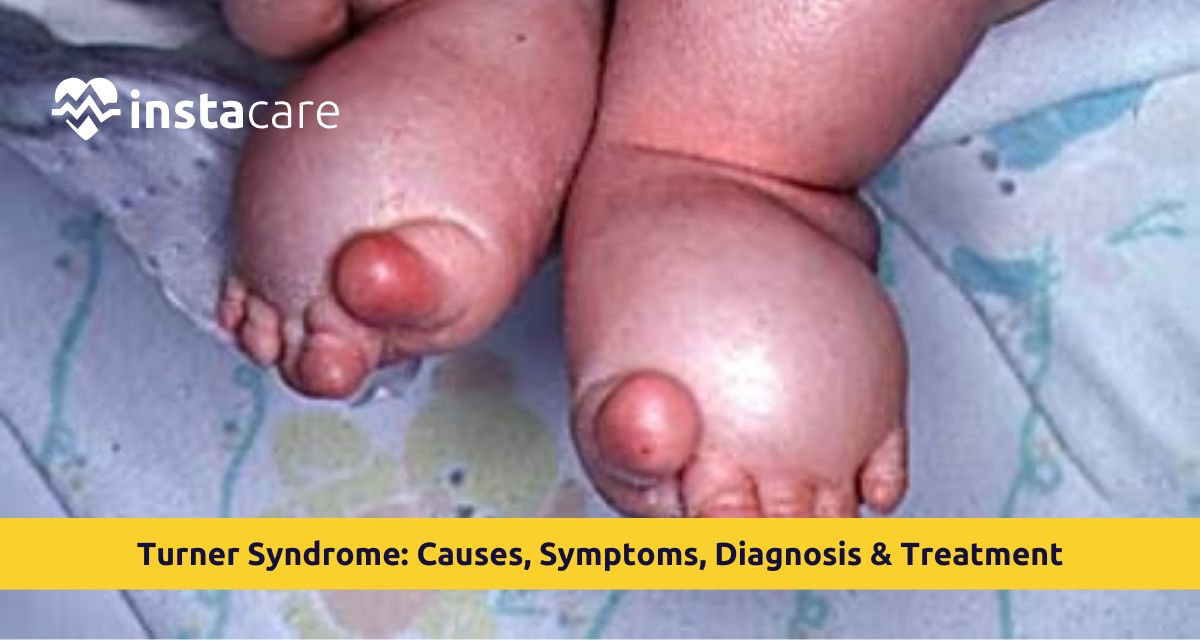What is Turner Syndrome?
Causes of Turner Syndrome
How It Happens:
- Random Error: The majority occur due to a random error in cell division
- Age of Motherhood: Turner syndrome is not caused by age of motherhood in comparison to other genetic conditions
- Non-heritable: Turner syndrome is not inherited genetically from parents to child like in the majority of cases
- Spontaneous: The spontaneous alteration of chromosomes occurs without a recognized etiology
Risk Factors:
Family History:
Common Symptoms of Turner Syndrome
Turner syndrome's physical characteristics are usually:
- Short stature (most frequent symptom)
- Webbed neck (extra skin at the sides of the neck)
- Low back hairline
- Swollen hands and feet, particularly in infants
- Wide chest with extremely far-separated nipples
- Arms that slant away from elbows
- Droopy eyelids
- Low-set, rotated-back ears
Growth and Development Issues:
- Excessive childhood growth
- Inability to achieve the expected adult height without treatment
- Delayed or absent puberty
- Turner syndrome infertility (the overwhelming majority of females can't conceive without treatment)
- Missing or irregular menstrual cycles
Medical Issues:
- Turner syndrome heart problems occurs in approximately 25-50% of the patients
- Kidney anomalies
- Deafness
- Blindness
- Thyroid anomalies
- Bone anomalies, e.g., risk of osteoporosis
- Risk of diabetes elevates with age
Learning and Development:
- Average intellect (most people with Turner syndrome have normal or higher-level intellect)
- Numbers, space information, or memory impairments in some people
- Social difficulties or concern in certain situations
How is Turner Syndrome Diagnosed?
Prenatal Diagnosis:
- Fetal testing during pregnancy would be diagnostic of Turner syndrome
- Ultrasound will be able to pick up defects such as more fluid over the baby
- Amniocentesis or chorionic villus sampling will be diagnostic
Diagnosis in Newborns:
- Turner syndrome physical features includes puffy fingers and toes or webbed neck
- Congenital heart defects discovered at birth
- Turner syndrome genetic testing
Diagnosis in Childhood:
- Shortness of body that is not characteristic of families
- Delayed growth or puberty
- Learning issues in specific areas
Turner syndrome in adults:
- Primary amenorrhea (never menstruating)
- Short stature and other physical features
- Heart or kidney problems
Diagnostic Tests:
- Turner syndrome karyotype analysis: Chromosome study to confirm diagnosis
- Physical exam to check for typical features
- Heart examination (echocardiogram, EKG)
- Kidney ultrasound
- Hearing and eyesight tests
- Hormone blood tests
Read More: Leaky Gut Syndrome
Treatment and Management of Turner Syndrome
Treatment of Growth:
- Turner syndrome growth hormone therapy is the most prevalent Turner syndrome treatment
- Injections of growth hormone are beneficial to enhance the height
- Treatment is started in childhood
- Can be used to achieve a better height in adulthood
Puberty and Hormone Treatment:
- Estrogen treatment to induce puberty and develop secondary sexual features
- Hormone replacement therapy to preserve bone density
- Treatment of abnormal menstrual cycles
Care of the Heart:
- Periodic follow-up of the heart to monitor for characteristic
- Surgical repair of heart malformations if necessary
- Blood pressure check
- Some require surgery to fix serious heart defects
Restore Medical Treatment:
- Routine measurement of kidney function
- Continuous hearing and vision checks
- Thyroid function tests
- Bone density measurements
- Counseling with a mental health expert when necessary
Fertility Options:
- Most women with Turner syndrome have infertility, but treatment is possible
- IVF and donated eggs have made women mothers
- There is a possibility to adopt a family
Living with Turner Syndrome
Childhood and School:
- Routine growth monitoring and hormone replacement therapy
- One-to-one educational support in case of learning difficulties
- Building self-esteem and self-confidence
- Encouragement of activity and sport (with doctor's approval)
Teenage:
- Hormone treatment for puberty
- Emotional support throughout adolescence
- Education about the disorder and advance planning
- Acquiring self-sufficiency and self-care skills
Adulthood:
- Follow-up on a regular basis by medical care provider
- Education and work planning
- Family and relationship planning counseling
- Bone and heart health maintenance
- Diabetes and thyroid disorder regular screening
Emotional and Social Support:
- Change of adjustment can be facilitated by counseling
- Support groups bond and become individual and families
- Acquiring good social relationship
- Emphasis on ability and strength
Conclusion

